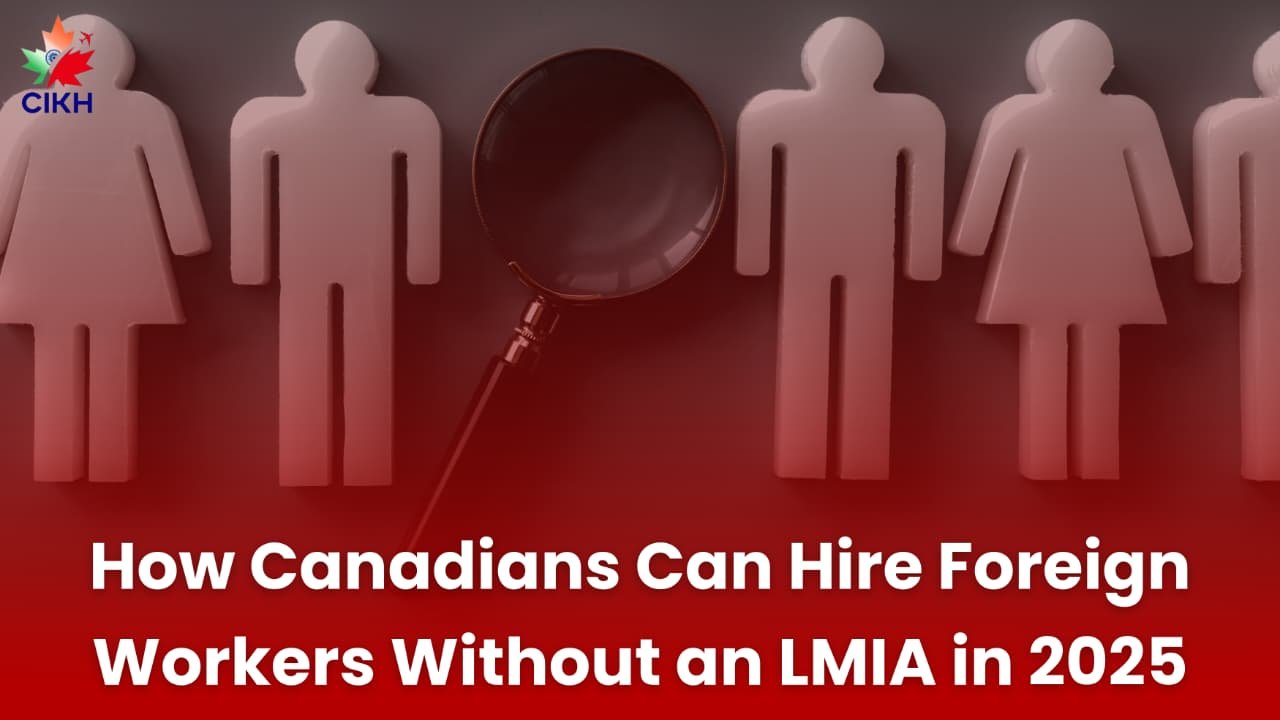Hiring a foreign worker typically entails going through the Labour Market Impact Assessment (LMIA) procedure, which requires Canadian firms and families to demonstrate that no Canadian worker is available for the position. Employers can onboard foreign talent without the expense, delays, and paperwork associated with an LMIA, as more than half of temporary work permits issued in Canada in 2025 are LMIA-exempt.
Book Your Consultation for Canadian Immigration
The purpose of LMIA-exempt programs, how Canadians can hire workers through them, and what employers need to know are all covered in this article.
Why Canadians Care About LMIA-Exempt Hiring
- Canada awarded 627,460 LMIA-exempt licenses under the International Mobility Program (IMP) between January and October 2024.
- The IRCC processed 825,600 work visa applications in the first seven months of 2025, majority of which were exempt from LMIA.
This indicates that Canadian companies are already depending significantly on these initiatives to swiftly address labor shortages.
What Does “LMIA-Exempt” Mean for Employers?
Employers who use LMIA-exempt hiring are exempt from applying for approval from Employment and Social Development Canada (ESDC) prior to hiring a foreign worker. Rather, you:
- Use the Employer Portal to submit an offer of employment.
- The employer compliance cost is $230.
- Give the employee the offer ID so they can submit an application for a work visa.
The Main LMIA-Exempt Pathways Available to Canadians
1. International Mobility Program (IMP)
The majority of LMIA-exempt categories are covered under the IMP. Employers in Canada use it to hire under:
- Professionals in authorized fields in the United States and Mexico are eligible to participate in CUSMA (previously NAFTA).
- Intra-Company Transfers (ICTs): these are transfers of executives, managers, or specialist personnel from global corporations to their Canadian divisions.
- Bringing in French-speaking talent from beyond Quebec is the goal of Francophone Mobility.
Exemptions for significant benefits—for employees who contribute to society, culture, or the economy (artists, academics, entrepreneurs).
2. Open Work Permit Holders
With open work permits, many foreign workers already in Canada are able to work for any business. Among the examples are:
- Spouses of international students or employees.
- Candidates with a Bridging Open Work Permit (BOWP) for permanent residency.
- Post-Graduation Work Permit (PGWP) holders who are recent graduates.
This is the easiest path for Canadians: employing someone with an open permit eliminates the need for an LMIA and an employer compliance filing.
3. International Experience Canada (IEC)
Young workers from nations with youth mobility agreements can work in Canada without an LMIA if they have IEC permits. This route is vital to many Canadians who work in hospitality, tourism, and seasonal jobs.
4. Trade Agreement Professionals & Business Visitors
The LMIA phase is not required for Canadians to bring in experts, technicians, and business visits under trade agreements such as CUSMA and others.
Step-by-Step for Canadians Hiring Without LMIA
- Determine whether your candidate is eligible under IEC, IMP, or open permit.
- Send in the employment offer through the Employer Portal (unless you have an open work visa, in which case you don’t need to).
- Give the candidate the offer number after paying the compliance cost.
Because the IRCC can audit employers, keep compliance records, including employment descriptions, salaries, and duties.
Example from a Canadian Business
A senior developer from a U.S. partner firm was required by a tech startup based in Toronto. The business utilized the Intra-Company Transfer stream rather than waiting months for an LMIA. The project was able to continue when they paid the compliance charge, made the offer online, and their candidate obtained a work permit in a matter of weeks.
Common Mistakes Canadian Employers Make
- Assuming an offer from an employer is necessary for open employment permits. Employers should nevertheless confirm the permit terms even if they don’t.
- Incorrectly utilizing the Employer Portal. One of the main causes of rejections is an incomplete or erroneous job offer submission.
- Failing audits for compliance. The IRCC has the authority to review your employment duties and remuneration to make sure you complied with the terms.
Final Word for Canadian Employers
One of the quickest and most economical ways for Canadians to add foreign workers to the workforce is through LMIA-exempt hiring. Businesses can avoid thousands of dollars and months of delay by using trade agreements, intra-company transfers, or hiring someone who is currently in Canada with an open permit.
Knowing which exemptions apply and making sure your documentation is accurate are crucial. When implemented properly, LMIA-exempt pathways benefit both Canadian employers and workers by providing them with the expertise they require without adding red tape.
Sources
- Government of Canada — Hire a worker without an LMIA: International Mobility Program (IMP)
- Government of Canada — Employer compliance requirements and Employer Portal guidance
- Government of Canada — Open work permits: spouses, BOWP, PGWP, vulnerable workers
- Government of Canada — International Experience Canada (IEC) program
- Government of Canada — Intra-Company Transfers under IMP
- Government of Canada — CUSMA and other free-trade work permit categories
- IRCC Transparency Data — 627,460 LMIA-exempt permits issued (Jan–Oct 2024)
- IRCC Applications at a Glance — 825,600 work permits finalized (Jan–July 2025)





